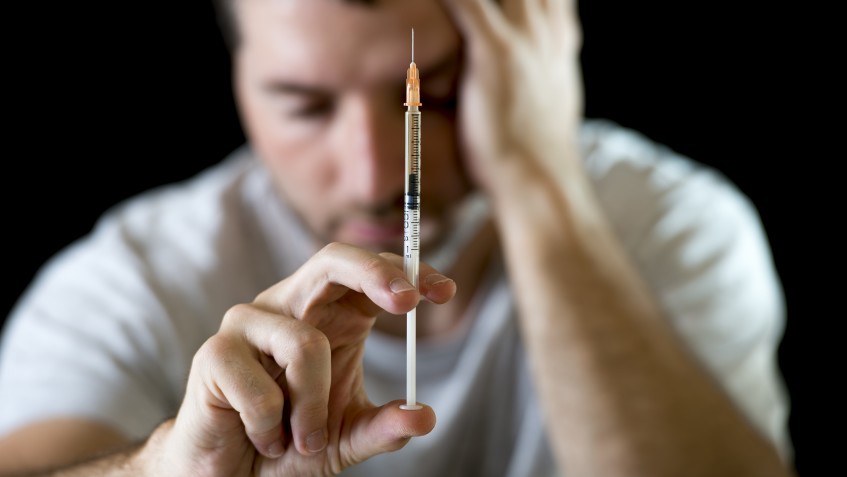29th January 2016
Contributing Writer for Wake Up World
Betty Tully has firsthand experience with the devastating effects of prescription opiate addiction. In January of 2001, she was thrilled to receive a new “miracle drug” from her doctor that would eliminate the chronic lower back pain, which had plagued her for decades. She was also assured that the painkiller wouldn’t put her at risk of addiction.
She began with 20 milligrams of OxyContin, but soon began asking for higher doses. Her doctor complied.
“By June, I was an absolute zombie. I couldn’t work anymore, I couldn’t drive my car anymore. I left my car running one day on the street,” the former real estate agent told the Huffington Post. “I was calling his office and screaming that I needed this medicine.”
Within a year, Tully was on 280 mg of OxyContin a day. A hard worker since the age of twelve, and the mother of two, she became a shadow of her former self. Afraid she would forget a dose and experience the dreadful withdrawal symptoms of nausea and profuse sweating, she refused to leave her house. Once she decided to finally get off the pills, it took her six solid years to completely kick the habit. And she considers herself lucky.
“Middle-aged women getting pain pills from doctors are dying from overdoses at some of the highest rates in history. In 2010, 40 percent of U.S. drug overdose deaths were women, many of whom died from abusing prescription pills.” (source)
According to the Centers for Disease Control and Prevention, prescription opioid abuse is the worst of its kind in U.S. history.
“We had a fourfold increase in deaths from opiates in a decade,” said Dr. Tom Frieden, director of the CDC. “That’s nearly 17,000 people dying from prescription opiate overdoses every year. And more than 400,000 go to an emergency room for that reason.”
We cannot look at this crisis sweeping the nation without considering the driving force behind the epidemic, namely the pharmaceutical companies. The Sackler family — who owns Purdue Pharma and makes the opiate OxyContin — has literally made a killing on the drug, with an estimated net worth of $14 billion.
A New Breed of Painkiller
For years, opioid drugs — such as hydrocodone, oxycodone and morphine — were used to manage intense pain in cases such as end of life cancer or injuries like a broken bone. And yet when OxyContin entered into the fray, everything changed.
Due to massive marketing campaigns and a number of seminars aimed at doctors, OxyContin was deemed a ‘miracle’ for those suffering from chronic pain. Purdue Pharma sold doctors on the drug claiming that, since it was time-released, addiction to the opiate was rare. The pitch worked. By 2001, OxyContin raked in more than $1 billion in sales.
In 2007, however, Purdue and three of its top executives were found guilty of deceiving doctors, regulator and patients about the addictive nature of the drug, and subsequently paid over $600 million in fines. All the same, when viewed in light of the enormous profits the company garnered from the drug, the fine is no better than a mild slap on the wrist.
Unfortunately, this isn’t the end of the story. When a federal-state crackdown took place against “pill mills” in an effort to curb the excessive dispensing of prescription opiates, an unexpected consequence took root: a new epidemic of heroin use.
A Surge in Heroin Addicts
For over a decade, the U.S. government has been tightening regulations for the prescribing of opiates, to the point where doctors have been arrested for violations and clinics known as “pill mills” have been shuttered. These clinics are often disguised as independent pain-management centers, where doctors are prescribing and/or dispensing the narcotics in an inappropriate manner or for non-medical reasons. They are also prone to open and shutdown rapidly to avoid law enforcement raids.
The intention behind the campaign was honorable: law enforcement agencies were attempting to prevent deaths from the abuse of prescription opioids, which is estimated at more than 16,000 people each year. However, as the pain medications became less available and pricier on the street, droves of opiate addicts then turned to heroin for a fraction of the price, but with a similar, euphoric high. Sadly, the rate of heroin overdoses spiked as well.
With the death of actor Philip Seymour Hoffman in 2014 from a drug overdose, the heroin epidemic in the U.S. has attracted greater national attention. The war on drugs created a conflict where a lockdown on one illicit substance created a profitable opportunity for another. This is precisely what happened when prescription opiates came under tighter regulations.“Absolutely, much of the heroin use you’re seeing now is due in large part to making prescription opioids a lot less accessible,’’ said Theodore Cicero, a psychiatry professor at Washington University in St. Louis.
Co-author of a 2012 study in the New England Journal of Medicine, Cicero’s team discovered that when OxyContin was reformulated to prevent abuse, heroin use nearly doubled.
“The most unexpected, and probably detrimental, effect of the abuse-deterrent formulation was that it contributed to a huge surge in the use of heroin, which is like OxyContin in that it also is inhaled or injected,” said Cicero. “We’re now seeing reports from across the country of large quantities of heroin appearing in suburbs and rural areas. Unable to use OxyContin easily, which was a very popular drug in suburban and rural areas, drug abusers who prefer snorting or IV drug administration now have shifted either to more potent opioids, if they can find them, or to heroin.” (source)
Cicero feels the upswing of heroin use is significant enough to merit getting the word out to physicians, regulatory officials and the public, in order to bring awareness to the problem. Law enforcement officials around the country are already seeing a dramatic spike in heroin use since tighter restrictions on opiates have come into effect. But, as Cicero points out, these restrictions have come at a heavy price.
“Heroin is a very dangerous drug, and dealers always ‘cut’ the drug with something, with the result that some users will overdose. As users switch to heroin, overdoses may become more common.”
Article sources
- www.news.wustl.edu/news/Pages/24025.aspx
- www.cbsnews.com/news/whats-a-pill-mill
- www.projects.huffingtonpost.com/dying-to-be-free-heroin-treatment
- www.washingtonpost.com/politics/experts-officials-missed-signs-of-prescription-drug-crackdowns-effect-on-heroin-use/2014/03/06/2216414a-9fc1-11e3-b8d8-94577ff66b28_story.html
- www.huffingtonpost.com/2014/02/24/heroin-epidemic_n_4790898.html
- www.nytimes.com/2014/02/11/health/prescription-painkillers-seen-as-a-gateway-to-heroin.html?_r=4
- www.nbcnews.com/health/health-news/prescription-drugs-could-be-gateway-heroin-officials-say-n27491
- www.drugabuse.gov/publications/research-reports/heroin/how-heroin-linked-to-prescription-drug-abuse
- www.usuncut.com/news/sackler-family-oxycontin-clan-overdose-epidemic
- www.cdc.gov/drugoverdose/data/overdose.html
Previous articles by Carolanne Wright:
- Monsanto Charged with Crimes Against Nature and Humanity – Set to Stand Trial in 2016
- Dr Sebi: The Man Who Cures Aids, Cancer, Diabetes and More
- Politicians in California May Soon be Forced to Wear Corporate Sponsor Patches Like Nascar Drivers
- Plastic-Eating Mushroom Discovered in the Amazon Rainforest — A Solution for Our Trash Saturated World?
- Chronic Lyme Disease: A Modern Plague the Government Chooses to Ignore
- Big Pharma and Organized Crime — They are More Similar Than You May Think
- Over 100 Scientific Studies Agree: Cannabis Annihilates Cancer
- Emotional Energetic Healing: The Future of Medicine is Here
- Why Every Parent Should Consider Unschooling
- The Greenhouse of the Future: Grow Your Own Food Year-Round With This Revolutionary System
- First U.S. City Produces More Electricity Than It Uses — With 100% Renewable Technology
- Autistic Boy with Higher IQ Than Einstein Discovers Gift After Removal from State-Run Therapy
About the author:
 Carolanne enthusiastically believes if we want to see change in the world, we need to be the change. As a nutritionist, natural foods chef and wellness coach, Carolanne has encouraged others to embrace a healthy lifestyle of organic living, gratefulness and joyful orientation for over 13 years
Carolanne enthusiastically believes if we want to see change in the world, we need to be the change. As a nutritionist, natural foods chef and wellness coach, Carolanne has encouraged others to embrace a healthy lifestyle of organic living, gratefulness and joyful orientation for over 13 years
Through her website Thrive-Living.net she looks forward to connecting with other like-minded people from around the world who share a similar vision. Follow Carolanne on Facebook, Twitter and Pinterest.
Source Article from http://wakeup-world.com/2016/01/29/prescription-painkillers-a-gateway-drug-to-heroin-addiction/
 RSS Feed
RSS Feed















 January 28th, 2016
January 28th, 2016  Awake Goy
Awake Goy 


 Posted in
Posted in  Tags:
Tags: 













